
7 Women Making Moves in Colour Grading
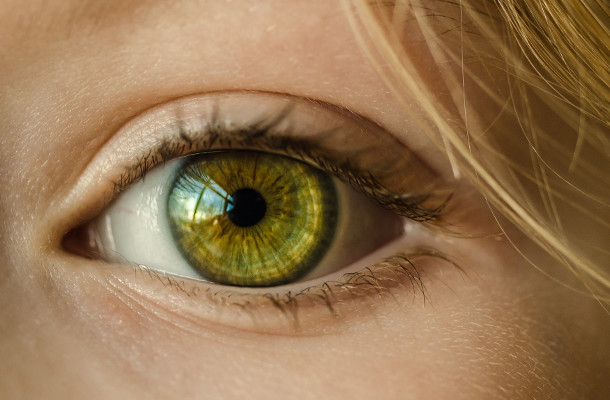
As we’re all constantly reminded of, particularly with International Women’s Day this week, most fields of this industry have a long way to go to achieve gender equality.
Here at LBB we’re fascinated by colourists. Grading is a job that seems closer to sorcery than most. But we noticed we rarely hear about women doing it, which seems like a particularly nonsensical bit of gender imbalance, considering science suggests that women, on average, have a better grasp of colour.
Thankfully, there’s hope for progress in the form of the brilliant women currently working as colourists around the world. LBB’s Addison Capper and Alex Reeves caught up with seven of the best out there, from Electric Theatre Collective, Coffee&TV, Nice Shoes, Freefolk, CHEAT and Framestore.
1. Kaitlyn Battistelli
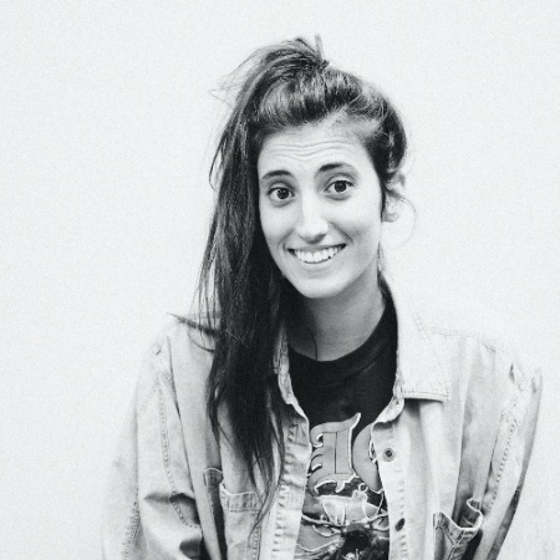
Kaitlyn Battistelli
Colourist at Electric Theatre Collective
LBB> What attracted you to the world of colour grading?
KB> I studied illustration in college and did a lot of digital painting. For me, the transition into colour correction seemed the most natural. When I got the opportunity to learn at ETC, I jumped on it. I couldn't imagine myself doing anything else.
LBB> What's your favourite kind of film to grade?
KB> I love the fast-paced creative world that music videos have to offer. Every day is a new collaboration with a different director. It's exciting.
LBB> There's definitely a gender imbalance in colour grading. Why do you think it exists?
KB> This is a tough one. I know that there is a lot of gender imbalance in the film industry in general, but I would say that for colour grading specifically not enough women even know it is out there. I definitely never knew about it and would probably never have known about it if I didn't accidentally find myself a runner at another post house.
LBB> What have you worked on recently that you're particularly proud of?
KB> I did an amazing promo for Moses Sumney recently with Allie Avital, an amazing director at Partizan. I've had the opportunity to collaborate with her on several projects and they have been some of my favourite films to grade. The Beck grade I worked on with director Brook Linder was a fun one for sure.
2. Simona Cristea

Simona Cristea
Head of Colour at Coffee&TV
LBB> How did you end up becoming a colourist?
SC> I was 21 and in my final year at art college when I was approached to apply for a grading training scheme at a post production facility in my hometown of Bucharest. They were opening up a new grading department and approaching art students specifically, as they wanted individuals from a creative background who had an eye for colour to enhance film.
I applied and got accepted, alongside 15 other people. I loved every minute and worked tirelessly throughout the scheme in order to make it to the final three people, who were given roles at the company. I was lucky to get on the scheme but I also worked really hard to make it to the last stage alongside two other talented women.
LBB> What's your favourite kind of film to grade?
SC> Every job has both its challenges and charms. I love to work across genres but I do find the particular demands of high-end beauty and fashion grading can often be tremendously satisfying and rewarding. You literally give the footage a makeover. As a colourist you have the ability to rapidly change the look and feel of the whole film. This genre of grading is also very technical and I enjoy the process of beginning, crafting and delivering a job.
I do also love to work on anything from the natural world, cinematic landscapes, sunsets, dawn or dusk, and I always enjoy the opportunity to work with moody and stunning scenes.
LBB> There's definitely a gender imbalance in colour grading. Why do you think it exists?
SC> I was really proud to make Televisual Magazine’s Top Ten list of colourists in 2017, but I was also disappointed to see I was the only woman. I don’t think there’s any conspiracy or deliberate attempt to keep women away from colour roles, I just think the imbalance exists because often grading is considered a very technical job rather than artistic; at least this was the case when I started my career and colourists were mainly engineers. It appears as though women are far more encouraged by education or the post production industry to move into production rather than technical and creative positions.
I’ve always said, the best person should get the job. Whatever your gender or background, if you’re willing to put the time in and hone your craft, you’re deserving of a career. I feel girls and women just need more encouragement and opportunity to consider grading. The role of a colourist also needs more exposure so people can see what’s entailed; I’m not sure that many people sat in film schools or art colleges know it’s an actual job! It’s up to colourists, not just female colourists, to attract and train more talent and draw greater attention to grading as an essential role within the post production process.
LBB> What have you worked on recently that you're particularly proud of?
SC> In the past year, I particularly enjoyed working on Björk’s ‘notget’ music video. A stunning film by directors Warren du Preez and Nick Thornton Jones. It's made up of two parts in total contrast to each other. The first half of the film is black and white and we went for a super moody vintage noir-ish look. The second part represents life and is very colourful, with electric blues and fluorescent yellows.
It was also a real privilege to work with Vicky Lawton on a colourful and engaging campaign in support of music charity Restore the Music. Grading was essential to enhance and bring out the explosive energy of the colours within the two short films.
On both of these spots the directors are also very well respected photographers, so they want to elevate the moving pictures to the same level of detail as their stills work, inspiring me to really push boundaries.
3. Roslyn Di Sisto
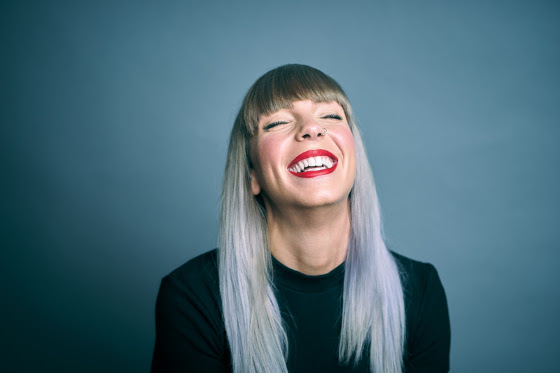
Roslyn Di Sisto
Colourist at Nice Shoes
LBB> When did you realise you wanted to be a colourist and what steps did you take to get there?
RDS> Colour has always been a huge part of my creativity, not exclusively in my main game of film and moving imagery, but also in photography, fashion, home decoration - anywhere I can use it for fun and to express myself.
Wide eyed, fresh out of film college and with blind confidence, I begged my way into a post house back home in Melbourne, Australia. I was given a week to prove myself and landed a role as an edit assistant with hopes to one day become an editor myself. Outside of the endless logging, syncing, tape dubs and technical duties, part of the role was to attend one-light DI sessions at the colour house across the street. It was here that my mind was blown. The elaborate DI process, the millions of buttons, the film reels, the intricate software and hardware - suddenly I found myself with a new focus. One of the first colourists I sat with went on to become an incredible mentor, and later taught me everything I needed to kick off a career that for most of my life, I never knew existed.
LBB> What's your favourite kind of film to grade?
RDS> I love everything with a strong sense of power and style. Every year I cut my own reel which ultimately is indicative of the types of projects that energize me most! Music, fashion and cinema equally inspire me on the daily, so I try to immerse myself across all these platforms to keep it fresh. Ads are awesome because they embody all of the sentiments of film, pop culture and fashion, but distilled and compressed into teeny tiny screen time. It means my skills are being exercised and I'm constantly being challenged by having to creatively reset, executing new work at a high rate.
LBB> There's definitely a gender imbalance in colour grading. Why do you think it exists?
RDS> There is a huge gender imbalance across the board in our industry, and like most other technical jobs, colour grading has historically been saturated with men. Interestingly enough, the first colourist I worked under was a woman, and she was mentored by a female colourist before her, so we often joked about the fact that naively, we lived in our own little bubble of girl power!
I think it’s extremely important to foster young women in the industry to rise up into these creative and technical roles, which is a big part of why we recently brought on a fantastic female assistant colourist to Nice Shoes' Toronto studio who I’m sure will grow into a strong leader. We also have a talented up and coming colourist Ashley Ayarza based out of our New York studio who's building up a very impressive reel. There are steps being taken by our company and others like ours to shift the balance amongst colourists as well as other roles. I hope to see a very different industry within a short amount of time.
LBB> Name your favourite piece of work that you’ve worked on.
RDS> Just like I can’t pick a favourite colour, it’s impossible to choose a favourite project. I love so many.
I will say though, that most significantly, the one project that opened a lot of doors for me, and marked a pivotal moment in my career was Drake’s ‘Hotline Bling.’ Creatively, it was a unique piece specifically for colour, but more importantly for me, it was an amazing introduction to a group of innovative collaborators that I have since had the pleasure of building and growing with. Hotline is the gift that keeps on giving! We all need that one project to put us on the map - from here I intend to keep stepping it up and up.
4. CJ Dobson
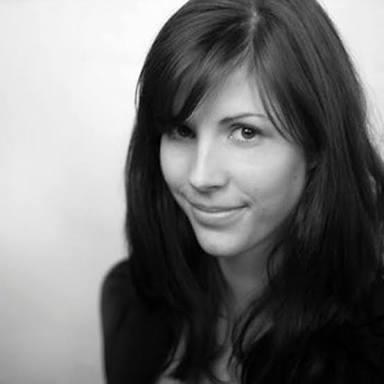
CJ Dobson
Freelance Colourist
LBB> How did you end up becoming a colourist?
CJD> I always wanted to work in film but didn’t know where to start so off I went to film school. When I discovered grading tools I was so pumped, so even at uni, I was grading everyone else’s films.
I started out my career wearing many post-production hats: data wrangler, editor, VFX, compositing etc. Word got out pretty quick about this young enthusiastic chick that loved colour grading so I started to specialise very early on. At that stage I was self-taught but then Digital Pictures whipped me up, moved me from Wellington to Melbourne where I was lucky to receive guidance from some of Australia’s most experienced colourists.
LBB> What's your favourite kind of film to grade?
CJD> I enjoy all film projects. I was recently given the brief “dark and gritty” and my heart jumped for joy! I LOVE dark and gritty. But at the end of the day, the ultimate gig is when the grade supports the story. When the pictures subconsciously enhance the journey of the viewer.
LBB> There's definitely a gender imbalance in colour grading. Why do you think it exists?
CJD> It’s true that in general men are more prone to colour blindness but I don’t think that’s an indication of whether men or women make better colourists. I think what people don’t realise is that it takes years of grading full time to train your eye. Colourists with five plus years experience are likely on the same level when it comes to colour perception.
Unfortunately it is too often assumed that I am less technical than my male peers so this is where I think gender comes into it. We need to support and encourage more young women to take on tech roles and that’s why International Women’s Day is so important.
LBB> What have you worked on recently that you're particularly proud of?
CJD> It was a couple of years ago now but I was really proud to be involved in the making of ‘Tanna.’. It was nominated for an Oscar last year so to see something you’ve worked on receive such acclaim was wonderful for the whole team. It was the most challenging grade I’ve ever done (95% uncontrolled light along with opposing times of the day, seasons and weather conditions all cut together) BUT that challenge was one of the reasons it was the so rewarding.
5. Holly Greig
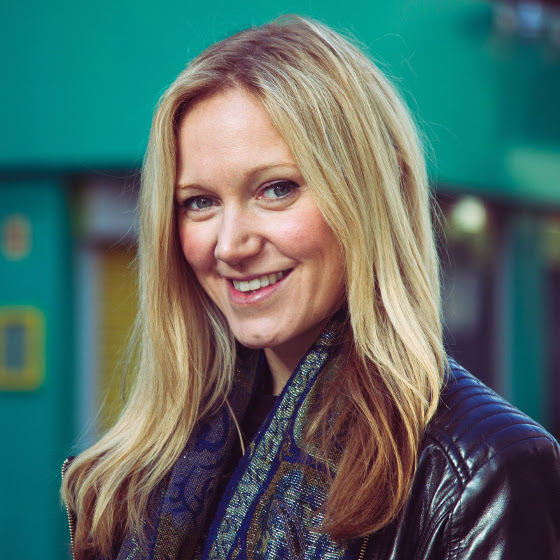
Holly Greig
Colourist at Freefolk
LBB> How did you end up becoming a colourist?
HG> I actually started working at a post house because I was interested in editing. I had never heard of grading - but once I learned about how you could affect the picture using colour I was hooked! I spent many hours whilst I was a receptionist harassing the colourists and their assistants, picking their brains and watching them work, learning how different colourists apply their own techniques and have their own ways of working.
After a lot of training, lingering around and generally stalking the colourists, finally a job came up in the machine room and I got it! From then on in it was much easier to spend time in the suite and to sneak moments practising, especially when you're on the night shift! The good and bad thing about being a colourist is that the possibilities are endless, which means that you never know where you might go with a look - you could just keep on tweaking forever!
LBB> What's your favourite kind of film to grade?
HG> Music videos are great because usually they are a bit more conceptual and you have the ability to be a bit more out there. It’s also a great pleasure the work on short films as usually there is so much heart, thought, time and dedication that goes into them. It feels so rewarding when you get to be a tool in the process for those involved, seeing their vision coming together.
LBB> There's definitely a gender imbalance in colour grading. Why do you think it exists?
HG> I think the imbalance is something that across the industry as a whole is being turned on its head. It is such an incredibly positive upheaval and I feel very proud and lucky to be around during this exciting chapter of change!
If i were to try to pinpoint the reason the imbalance currently exists, I would say it might lay in the ingrained perception people have about roles in the industry. As most people start as runners and work their way up to their position, there has previously been a route that might be predicated for you depending on your gender. However, I think this ideology that women don't necessarily want to work as operators is definitely not the common assumption anymore. As a result, we are seeing a surge of talented young female operators in all departments. Whether that's due to the erosion of this preconceived career route for women or just because they have more interaction with the suites than before, it definitely seems like women are more regularly being drawn towards the grading suite, which is amazing.
LBB> What have you worked on recently that you're particularly proud of?
HG> I was lucky enough to have worked on a GooglePlay spot for Fred & Farid in New York on the theme of Female empowerment created completely by women for women. It was such a pleasure to grade as it had been beautifully shot and the clients were such enthusiastic, talented and interesting women. Also the spot places the emphasis on women being bad asses for many different reasons, from all different walks of life which was something that resonated with me...also the ability to go to Freefolk New York to grade was such a fantastic experience and such an exciting opportunity not just to work with new clients but to grade a piece that took a fresh and fun look at women being legends whilst working and playing.
6. Jax Harney
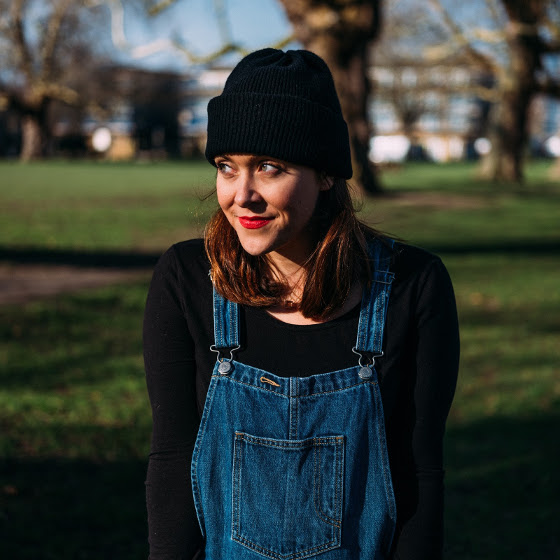
Jax Harney
Colourist at CHEAT
LBB> How did you end up becoming a colourist?
JH> I took a side step from my photography career.
I worked in fashion for a long time always obsessed with colour. I became frustrated when my colour work on stills campaigns did not translate over to the accompanying motion campaign. I took matters into my own hands, taught myself video grading and Davinci Resolve and decided to offer my stills clients my colour services. This then later introduced me to CHEAT and here I am.
LBB> What's your favourite kind of film to grade?
JH> Anything that’s shot well?
Seriously, I have no preference... I love working on new things. One of the joys of my job is that every day is different.
LBB> There's definitely a gender imbalance in colour grading. Why do you think it exists?
JH> I think our industry on the whole is awakening to the emerging female talent pool. New producers/agencies are commissioning more female directors, I’m working with more and more female DOPs. Times are changing, smoking rooms and men in suits are no longer the go-to. I’m Incredibly lucky that where I am at CHEAT we have a fantastic mixed team of talented men and women.
LBB> What have you worked on recently that you're particularly proud of?
JH> I’m currently putting the finishing touches on a documentary by Sasha Rainbow. It was shot out in Agbogbloshie, one of the worlds largest e-waste dumps, in Ghana.
Sasha and I worked on the Placebo video ‘Life’s What You Make It’ which was the first time I personally became aware of this matter.
It highlights the impact of electronic consumer waste in areas of extreme poverty. Yet at the same time celebrates the people who makes the most of their lives working there.
It's beautifully shot and I hope it will do well and raise a lot of awareness to a subject not many people have on their radar.
7. Jessica Vile

Jessica Vile
Colourist at Framestore
LBB> How did you end up becoming a colourist?
JV> I had always wanted to work in the film industry, but was unsure on which role. As soon as I was introduced to the colour department I knew it was what I wanted to do - I loved the creativity that was involved. I was unsure if I was able to pursue it as a career as I had no artistic background, and didn’t even know if I would be any good at it. I got myself involved with watching the artists at work, until I was able to start grading myself, and was told I had an eye for it. From then on my confidence grew, and I was soon promoted into the department.
LBB> What's your favourite kind of film to grade?
JV> I love grading music videos as I feel you can be more creative and explore many different looks.
LBB> There's definitely a gender imbalance in colour grading. Why do you think it exists?
JV> I was told of the imbalance, but have found that there are more female colourists than before. I'm not sure why this is; maybe women were not pursuing technical careers in the past, but if you look at the roster of female colourists, directors and cinematographers out today, it is very impressive.
When it comes to seeing colour, women do perceive colour better than men - but this doesn't mean that women can grade better than male colourists. It is down to the individual to make a good artist.
LBB> What have you worked on recently that you're particularly proud of?
JV> I loved working on Björk’s recent promo 'Utopia'. The end result was really awesome! Another great film was a commercial for Plan International, which, from beginning to end, was created and worked on only by women.













